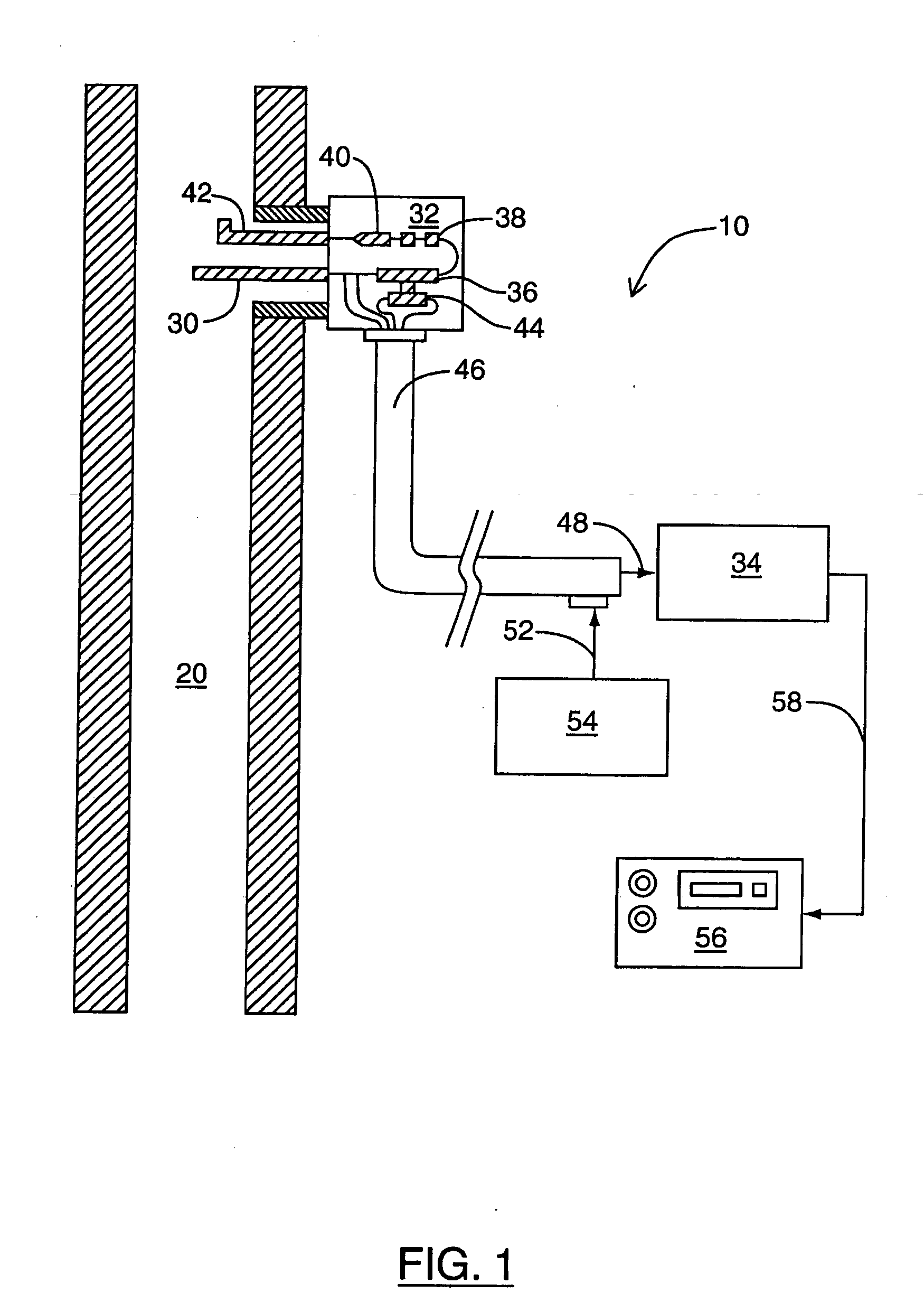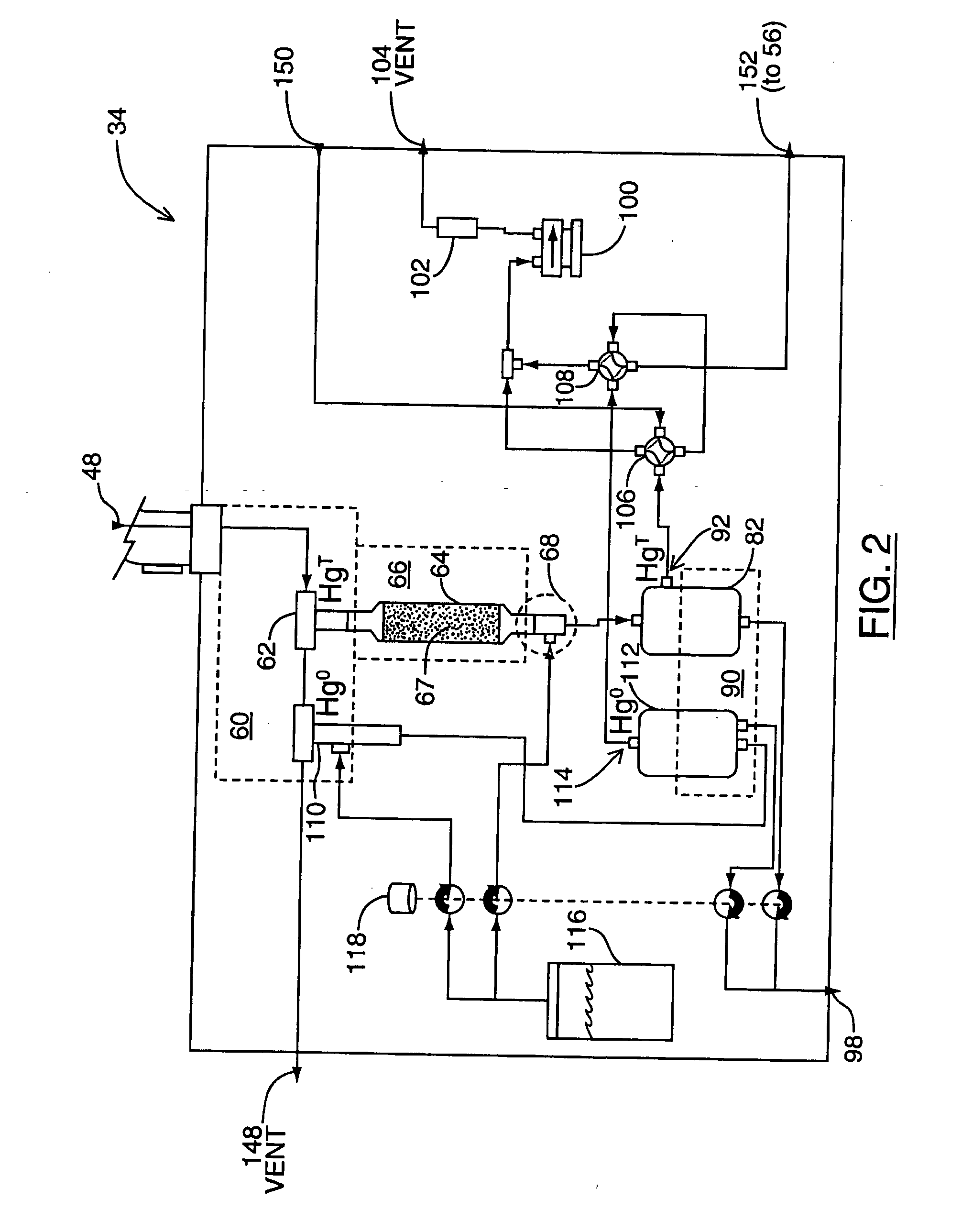Conditioning system and method for use in the measurement of mercury in gaseous emissions
a technology of conditioning system and mercury gaseous emission, which is applied in the direction of dispersed particle separation, instruments, separation processes, etc., can solve the problems of high maintenance cost, less useful in monitoring mercury in power plant emissions where greater sensitivity is required, and difficulty in detecting mercury in gaseous emissions. to achieve the effect of preventing recombination
- Summary
- Abstract
- Description
- Claims
- Application Information
AI Technical Summary
Benefits of technology
Problems solved by technology
Method used
Image
Examples
Embodiment Construction
[0019] At least some embodiments of the invention relate generally to a system for monitoring mercury in gaseous emissions, comprising: a sampling probe for sampling the emissions; a conditioning module coupled to the sampling probe, which may be adapted to speciate mercury in the emissions, the conditioning module adapted for coupling to a mercury analyzer; a calibration module coupled to the sampling probe; and a controller coupled to the conditioning module and the calibration module. The conditioning module comprises a thermal converter and, in some embodiments, one or more scrubbing units. The thermal converter comprises one or more pyrolyzer units, wherein at least one of the pyrolyzer units comprises material composed of an inert covalently bonded material selected from silicon carbide (SiC), silicon oxides (SiOn, n=1-2), silicon nitride (e.g. Si3N4), silicon boride (e.g. SiB6), boron nitride (e.g. BN) and mixtures thereof. At least one of the scrubbing units may comprise a c...
PUM
| Property | Measurement | Unit |
|---|---|---|
| thick | aaaaa | aaaaa |
| temperature | aaaaa | aaaaa |
| atomic fluorescence | aaaaa | aaaaa |
Abstract
Description
Claims
Application Information
 Login to View More
Login to View More - R&D
- Intellectual Property
- Life Sciences
- Materials
- Tech Scout
- Unparalleled Data Quality
- Higher Quality Content
- 60% Fewer Hallucinations
Browse by: Latest US Patents, China's latest patents, Technical Efficacy Thesaurus, Application Domain, Technology Topic, Popular Technical Reports.
© 2025 PatSnap. All rights reserved.Legal|Privacy policy|Modern Slavery Act Transparency Statement|Sitemap|About US| Contact US: help@patsnap.com



